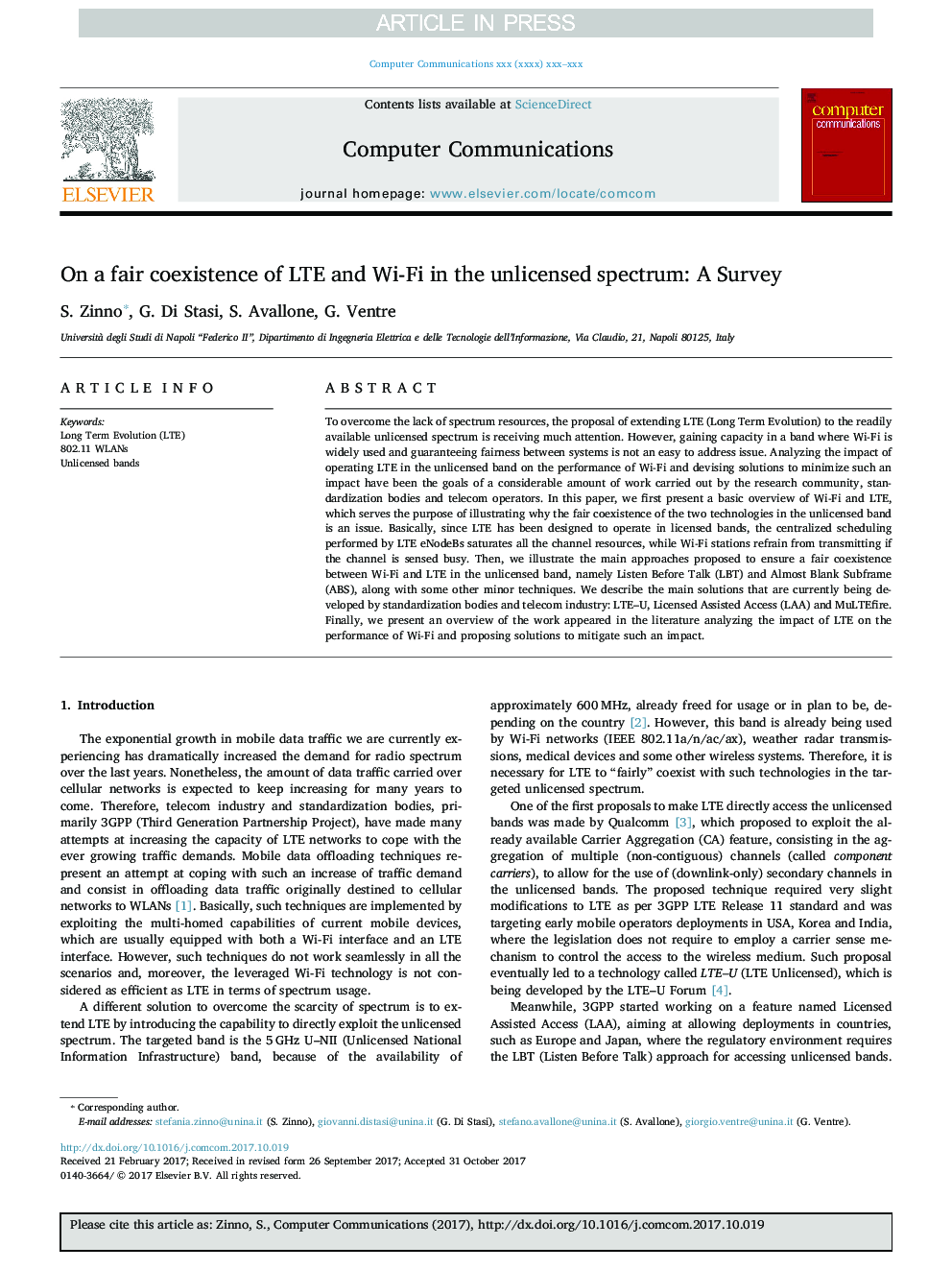| Article ID | Journal | Published Year | Pages | File Type |
|---|---|---|---|---|
| 6880170 | Computer Communications | 2018 | 16 Pages |
Abstract
To overcome the lack of spectrum resources, the proposal of extending LTE (Long Term Evolution) to the readily available unlicensed spectrum is receiving much attention. However, gaining capacity in a band where Wi-Fi is widely used and guaranteeing fairness between systems is not an easy to address issue. Analyzing the impact of operating LTE in the unlicensed band on the performance of Wi-Fi and devising solutions to minimize such an impact have been the goals of a considerable amount of work carried out by the research community, standardization bodies and telecom operators. In this paper, we first present a basic overview of Wi-Fi and LTE, which serves the purpose of illustrating why the fair coexistence of the two technologies in the unlicensed band is an issue. Basically, since LTE has been designed to operate in licensed bands, the centralized scheduling performed by LTE eNodeBs saturates all the channel resources, while Wi-Fi stations refrain from transmitting if the channel is sensed busy. Then, we illustrate the main approaches proposed to ensure a fair coexistence between Wi-Fi and LTE in the unlicensed band, namely Listen Before Talk (LBT) and Almost Blank Subframe (ABS), along with some other minor techniques. We describe the main solutions that are currently being developed by standardization bodies and telecom industry: LTE-U, Licensed Assisted Access (LAA) and MuLTEfire. Finally, we present an overview of the work appeared in the literature analyzing the impact of LTE on the performance of Wi-Fi and proposing solutions to mitigate such an impact.
Keywords
Related Topics
Physical Sciences and Engineering
Computer Science
Computer Networks and Communications
Authors
S. Zinno, G. Di Stasi, S. Avallone, G. Ventre,
